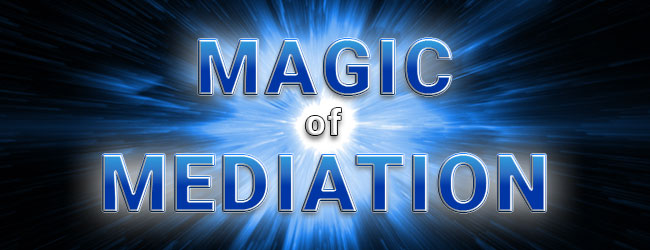By: Jared Lee
Mediation is a form of dispute resolution in which a neutral party, the mediator, facilitates communication among opposing parties, helping them to build an outcome that best fits their needs. Mediation has become increasingly commonplace as an alternative to litigating disputes, partly due to its ability to overcome even the most contentious disputes and complex barriers. But what is it about mediation or mediators that allows diametrically opposed groups to walk out of a mediation room shaking hands with a mutual agreement?
An interview with mediator Barry Appell lifts the curtain on how he was able to resolve one of his thorniest disputes. In the summer of 2020, the Mediation Center of Los Angeles contacted Barry Appell to mediate an employee-employer dispute. The dispute revolved around several issues, including wages, wrongful termination, and the business’s contact list. However, by the end of the mediation, Appell was able to work the ‘mediation magic’ receiving positive reviews from both parties’ counsel, in part stating that, “Mr. Appell is a miracle worker. He settled an impossible case between intractable parties whose hostility towards each other was a nearly insurmountable obstacle.” So what exactly allows mediation to overcome these obstacles? An in-depth conversation with Barry Appell lifts the veils on what it takes to achieve a successful mediation.
In the interview, Appell talks about how he attributes this recent success to efforts to understand the parties’ interests and needs (both spoken and unspoken), and then carefully crafting the mediation process.
The parties’ interests are the deeper needs and desires in the dispute needed to make the individual feel whole again. They are vital in helping parties leave a mediation satisfied and having their needs met, but the interests are not often apparent on the surface. Appell stated that listening and understanding the parties is a crucial first step to finding their interests.
One way that Appell opens the avenues to communication is through the use of separate pre-meeting conferences with each party’s attorney. In this step of the process, Appell actively listens to the attorney’s perception of the situation and obtains insight into the parties’ interests and any unique issues. At the beginning of the mediation, Appell actively listens to the parties themselves, to hear about the dispute from their perspectives and also answers any questions that the parties may have. The additional information and emotional cues provided in these conferences can give the insight that reveals the parties’ interests. These interests enable mediators to address the issues and goals of the parties.
Mediation stands apart from other dispute resolution forms, such as litigation or arbitration, by empowering the parties to decide on their own agreement. In the end, the parties have the full ability to accept, decline, or offer a proposed deal. To this effect, the mediator supports parties in understanding the reality of the situation, including possible outcomes, and opens options to help parties reach their goals. In Appell’s mediation, his insights revealed that the main obstacle revolved around the employer’s contact list. To both sides on the employee-employer dispute, the contact list stood as the most contentious aspect in which neither side wanted to budge. The resolute standing of both sides reinforced the parties’ belief that the conflict was irresolvable. However, Appell’s understanding of the parties’ separate interests allowed him to devise potential solutions that could fit both the employer and the employee’s needs. After discussing and refining various options with the parties, the employer and the employee were able to come to a mutual agreement on the issue of the contact list. Appell noted that overcoming the most combative barrier in the dispute was met with a sigh of relief from all sides. What seemed like an impossible situation now began to show the possibility of a potential resolution.
While understanding the interests and goals of the parties is essential, mediators must also have the wisdom and expertise to determine the process that facilitates communication. In Appell’s mediation, one of the major decisions was when and how to address the contact list issue. Should the most contentious matters be put at the beginning or the end of the mediation process? The answer largely depends on the situation, but can often be understood by some of the potential pros and cons of each. When putting the most contentious issues at the beginning, the parties waste no time discussing their needs and deal-breakers. The parties will be able to know where they stand on the most significant issues. Successful negotiations of early barriers potentially will also lead to smoother agreements on smaller issues. However, the consensus of smaller problems early on in the mediation can help build momentum that encourages agreement on more significant problems later on. In this mediation, Appell floated the possible resolutions to the attorneys first. When it appeared that there was a workable solution to the contact list issue, Appell focused on this resolution to start. Had this not worked, Appell stated that the would have adjusted his approach and likely focused on smaller issues to build momentum.
Given the vast potential variables, great flexibility and creativity can and should go into forming the mediation process. Appell gauged the situation, the parties, and the parties’ interests to choose the appropriate procedure. The resolution to the contact list obstacle detangled the thorniest issue in the dispute, paving the way to a resolution.
By listening to the parties, understanding their needs and interests, and then creating the appropriate process to communicate with each other, Appell was able to help parties reach a mutually beneficial agreement. These mediation principles show that even in the most contentious disputes, mediators can use the ‘magic’ of mediation to help parties come to the most satisfying outcome.


